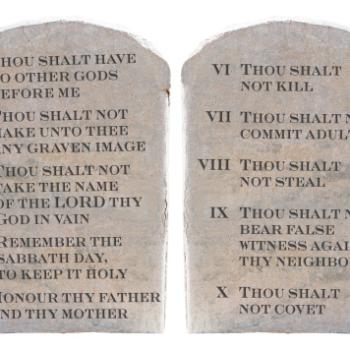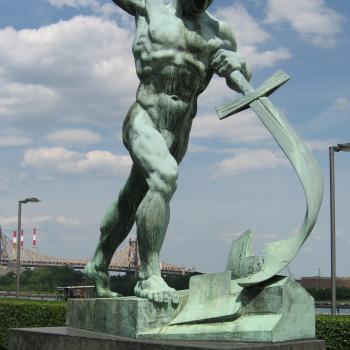For the past few months, newly-installed U.S. Secretary of State John Kerry has conducted Henry Kissinger style shuttle diplomacy between Israel and the Palestinian Authority (PA). The PA is headquartered in the city of Ramallah, located in the West Bank and north of Jerusalem. Kerry has thereby achieved a restarting of the peace process between them which has been dead for five years. It started last week in Washington, D.C. But so far, meetings have been conducted by lesser officials and consisted merely of talks about future talks. This agreement for talks is to last for the next nine months. Their goal is to achieve a peace agreement between the two parties, resulting in a Palestinian state. But it is widely reported that leading officials on both sides are rather skeptical about the effort.
How can you blame them? This conflict has been going on since Israel became reestablished as a state in 1948. Actually, it goes back farther than that, to the late nineteenth century. And the United Nations admits that it is the most difficult problem the UN has ever tried to solve. Moreover, it is amazing that this tiny portion of the earth, which involves only about fifteen million people, commands such global attention by highly affecting world politics.
The new infusion into this peace process is that the Arab League, which advises the PA and must approve any peace deal of it with Israel, has agreed with the PA to accept the concept of land swaps. Thus, the PA no longer demands that Israel give back all of the West Bank it took from the Palestinians, while under Jordanian ruling oversight, during the 1967 Six-Day War. Rather, the PA only requires that Israel relinquish to it a portion of land equal in size to the entire West Bank. Although the focus is still on Israel returning most of the West Bank to the PA, this new land swap concept fits into the scenario I propose for solving this conflict in my book, Palestine Is Coming: The Revival of Ancient Philistia (1990).
But what about the Palestinian Gaza Strip? Israel withdrew from it in 2005, thus effectively returning it to the Palestinians. However, in 2007 the Muslim party named Hamas split from the PA and exercised force in taking control of the Gaza Strip. If the PA makes a peace deal with Israel, it remains to be seen whether or not the PA and Hamas will get back together and form a Palestinian state in the two separated territories of the mostly West Bank entity and the Gaza Strip, to be joined by a corridor.
In the meantime, one month ago mass demonstrations in Egypt were directed against President Mohammed Morsi and his administration that is dominated by his Muslim Brotherhood party. Morsi had been in power only one year as Egypt’s first elected president. Only days later, Egypt’s military overthrew Morsi. The military installed the new chief of Egypt’s supreme court as its interim president. And it promised that open and free elections would be held again, it being in early 2014. But modern Egypt has had a history of military coups. It remains to be seen if Egypt will continue progressing toward democracy.
Modern Egypt’s territory included the Sinai Peninsula. But in the 1967 Six-Day War between Israel and its Arab neighbors, which included especially Egypt, Jordan, and Syria, Israel defeated these enemies and took from them four territories. They were Syrian’s Golan Heights, the West Bank which included East (Old) Jerusalem, the Gaza Strip, and the larger Sinai Peninsula which belonged to Egypt. In 1979, Israel relinquished this entire Sinai Peninsula back to Egypt in a peace treaty.
Egyptian protestors had caused Egypt’s military to decide to overthrow Egyptian President Hosni Mubarak, in January, 2011. After that, turmoil began to increase in Egypt’s northern Sinai Peninsula. It happened especially in the coastal region between the Gaza Strip and the city of El Arish, a distance of about twenty-five miles. (El Arish has a population of about 150,000 and is the governing city of the region.) The native Bedouin population of the northern Sinai was becoming dissatisfied with Egypt’s governing of this region. And there has been a significant influx of Islamic militants into this area. They say that their goal for this region is to establish an “Islamic Emirate” in it.
Three weeks ago, Egypt closed the Rafah Crossing, the only crossing between Egypt and the Gaza Strip. Egypt also increased its destruction of tunnels under the Egyptian-Gaza border. Gazans make and use them to smuggle needed goods into the Strip because Israel keeps it enclosed. Two days ago, Egypt’s military launched a massive incursion into the northern Sinai, killing several militants. The purpose for this operation has been to destroy militant bases and end all terrorist activity in the region.
In my book, Palestine Is Coming, I predict that a Palestinian state will be established in the plain of the Mediterranean coastland south of Tel Aviv that will stretch south to include the Gaza Strip. But I add that the northern Sinai Peninsula, located between the Gaza Strip and El Arish and somewhat inland, should, and probably will, be included in this Palestinian state. Why should it? The northeastern border of ancient Egypt was usually the Wadi el Arish basin. It extends from the coastal city of El Arish eastward to what is generally believed to be the region of ancient Kadesh Barnea.
As Israel insists in its Proclamation of Independence, I maintain that this Israeli-Palestinian conflict should be solved according to historical precedent. That is, let Israel have all of the West Bank, which is the very heart of its “ancestral land;” and let the Palestinians have the coastal plain south of Tel Aviv to El Arish and somewhat inland in which is establish their sovereign, independent state. That territory is the land of the ancient Philistines. Not only do the modern Palestinians derive their name from the Philistines, but I believe they have a stronger genetic link to them than to any other people group.
So, in my book I suggest that Egypt forfeit this northern Sinai territory to the Palestinians to be included in the formation of a Palestinian state only in the coastal plain. It would be a land swap in which the Palestinians should get a territory equal to the size of the entire West Bank and Gaza Strip, and Israel would get all of the West Bank. What of East Jerusalem? It should be made into an international district.
Where do I get such ideas? Bible prophecy. So, not only do I trumpet this proposal for solving this ongoing conflict, I believe the Bible indicates it is going to happen. Whether soon, or another hundred plus years from now, I don’t know. But it will happen.












